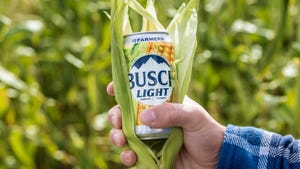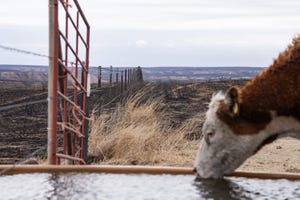Forage Wheat a Cowboy Can Love
Cowboys, observes Dennis Cash, are not the best farmers. No disrespect intended; it's just that in the Northern Plains, when cattlemen should be pulling into the field to drill forage crops in the spring, they're busy branding and getting ready to turn out on summer pasture. Indeed, a short growing season and shorter moisture don't make a recipe for easy forage production on the Northern Plains. That

Cowboys, observes Dennis Cash, are not the best farmers. No disrespect intended; it's just that in the Northern Plains, when cattlemen should be pulling into the field to drill forage crops in the spring, they're busy branding and getting ready to turn out on summer pasture.
Indeed, a short growing season and shorter moisture don't make a recipe for easy forage production on the Northern Plains. That may be changing thanks to Willow Creek, a new variety of winter wheat that out-yields other small-grain forage varieties.
Cash, a Montana State University (MSU) Extension forage specialist, says from 200,000 to 300,000 acres in Montana are planted to cereal crops every spring for forage production. Most of that is barley and it's almost entirely baled for winter hay.
While barley is a tried-and-true forage crop, it has some limitations, principally that it's planted in the spring. So, about 10 years ago, Cash and his research associates began looking at the possibility of a fall-planted cereal grain for forage production. The result is a variety of winter wheat they named Willow Creek.
That's not to say winter wheat isn't grown in Montana. It is. But the winter wheat varieties planted for grain production are all semi-dwarf and bearded, which doesn't make them suitable for forage. Willow Creek is awnless, Cash says, and grows about a foot taller than the semi-dwarf grain varieties.
“It heads out about 10 days later and matures about three weeks later. Turns out, these are all great characteristics for forage because it stays green longer,” he says.
Focused research
The wheat varieties developed for grazing and forage on the Southern Plains can't take the Montana winters, Cash says, so they had to find a homegrown variety suited to the climate. Using some grant money provided by USDA's Sustainable Agriculture Research and Education (SARE) program, Cash and others began looking at the forage potential of the varieties being tested in MSU's winter wheat breeding program. After several years of testing and breeding, they felt they had Willow Creek to a point where they could conduct some field testing with cooperating producers.
“We got a lot of mileage out of that because most of the people we gave the seed to were already using barley as a hay crop, so we got a good head-to-head comparison of Willow Creek against those varieties,” Cash says. “And it pretty well kicked the pants off anything else.”
Being a fall-planted crop, it fits a cattleman's seasonal work schedule better. Plus, it can take advantage of spring moisture, Cash says, “because it's in the ground and 6 in. tall, growing 1 in./day, when it's muddy in the spring and you ought to be doing your farming.”
That growth advantage allows it to out-yield barley on a tonnage basis. “It probably doesn't have quite the animal performance as barley,” Cash says, “but for most of these guys, they're not going for gain.”
Willow Creek is primarily a forage wheat; its grazing potential is limited, Cash says, particularly for fall and winter grazing. “When we plant winter wheat up here, it needs to be in the ground by Oct. 15. So typically it isn't going to have but one or two leaves in the fall; there isn't enough to graze.”
What's more, their precipitation pattern in July and August is generally dry. Cash says some producers looked at planting the end of July for some fall grazing. “But typically on dryland, we don't have reliable moisture. So if we graze it, it will be more of a spring-summer deal.”
That's a viable option. Their research looked at early spring grazing and found livestock could graze it in the early vegetative stage without any impact on subsequent hay yield.
Because they chose to make Willow Creek a public variety, Cash has no definitive handle on how much is being grown. “But there were probably 20,000 acres of it cut for hay this past summer,” he estimates. “And it probably will increase again this year.”
About the Author(s)
You May Also Like

.png?width=300&auto=webp&quality=80&disable=upscale)

